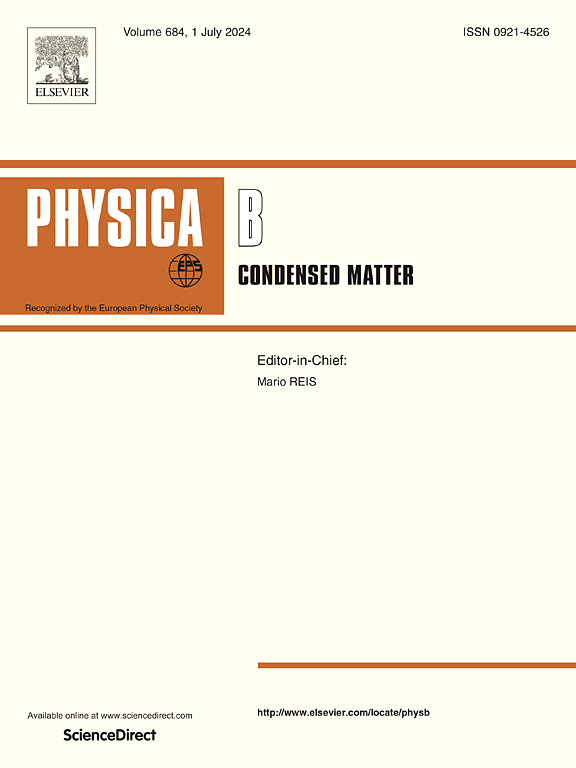Electrochemical properties of silver nanoparticles decorated aminosilicate functionalized TiO2 nanocomposite in hydrazine sensing
IF 2.8
3区 物理与天体物理
Q2 PHYSICS, CONDENSED MATTER
引用次数: 0
Abstract
An electrochemical hydrazine sensor was constructed using a glassy carbon electrode (GCE) customized with a silver-decorated aminosilicate functionalized TiO2 nanocomposite ((Ag/f-TiO2)NCM). Nanoporous TiO2 spheres were prepared and functionalized with aminosilicate (APS), serving as the catalyst support. Silver nanoparticles (AgNPs) were then deposited onto the functionalized TiO2 (f-TiO2) using a chemical reduction method. The modified sensing electrode ((Ag/f-TiO2)NCM) demonstrated superior hydrazine detection capabilities, with a lower limit of detection (LoD) of 0.26 μM and a sensitivity of 1.297 μA μM−1 cm−2. Additionally, the selectivity of (Ag/f-TiO2)NCM for hydrazine was investigated, showing high selectivity over several potential interferents, including Li+, Na+, K+, Cl−, Mg2+, NH4+, Ca2+, and NO3−. The strong metal-support interaction between Ag and TiO2 was thought to modify the electronic properties, thereby enhancing the catalytic activity through efficient charge transfer and improving the stability of the catalysts. This sensing strategy paves the way for the sensitive detection of hydrazine in spiked water samples.
求助全文
约1分钟内获得全文
求助全文
来源期刊

Physica B-condensed Matter
物理-物理:凝聚态物理
CiteScore
4.90
自引率
7.10%
发文量
703
审稿时长
44 days
期刊介绍:
Physica B: Condensed Matter comprises all condensed matter and material physics that involve theoretical, computational and experimental work.
Papers should contain further developments and a proper discussion on the physics of experimental or theoretical results in one of the following areas:
-Magnetism
-Materials physics
-Nanostructures and nanomaterials
-Optics and optical materials
-Quantum materials
-Semiconductors
-Strongly correlated systems
-Superconductivity
-Surfaces and interfaces
 求助内容:
求助内容: 应助结果提醒方式:
应助结果提醒方式:


